Is there a way to naturally heal or reverse a bulging disc in the lower back?
Can a bulging disc heal without professional treatment or surgery?
The answer is YES (for some people).

There are several effective ways to promote disc bulge healing that can definitely work.
You’ll find them here, right now.
Did you know anyone could have low back bulging discs without pain?
That’s right; the symptoms of low back bulging discs are usually unfelt.
So, If you suffer from extreme lower back pain and you have self-diagnosed yourself with a bulging disc, then I have some news for you:
You have a herniated/ruptured/slipped disc. Not a bulging disc.
According to Dr. Walter Salubro, the potential for a disc bulge to completely resolve or return to normal is uncertain and varies from case to case.
Once you optimize this, you can find yourself symptom-free and back to your normal life. The best treatment for a lumbar bulging disc is to help your body heal it on its own.
Overview
Key Points
- A bulging disc can heal naturally for some people, with lifestyle changes and certain natural treatments
- Bulging discs often do not cause pain, while herniated discs cause more significant discomfort
- Spinal decompression, whether through inversion therapy or specific devices, can temporarily alleviate pressure on the spine and improve symptoms, and has long-term benefits as well
- Infrared therapy can provide deep heat, improve circulation, offer up to 6 hours of pain relief, and help with inflammation and muscle relaxation.
- Some exercises can strengthen the muscles supporting the spine, improve flexibility, and improve blood circulation, leading to faster recovery.
- The most important lifestyle changes include ergonomic seating, good mattresses, and avoiding too much sitting
What Does a Bulging Disc Look Like?
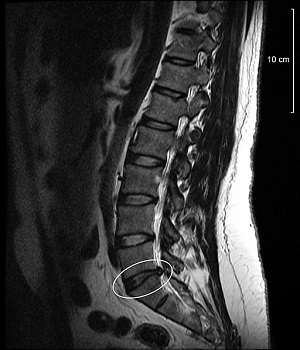
Discs are like miniature jelly doughnuts, exactly the right size to fit between your vertebrae.
They’re made out of an outer layer of tough cartilage surrounding softer cartilage in the center.
A bulging disk looks like a hamburger that’s too big for the bun.
The disc extends outside its normal place, and the bulge typically affects a large portion of the disc.
Bulging is considered part of the normal aging process of the disk.
A herniated disk, on the other hand, happens when a crack in the tough outer layer of cartilage allows some of the softer inner cartilage to “escape” out of the disk.
Herniated disks are also called ruptured disks or slipped disks, and cause much more pain than compressed discs.
A bulging disc may not always cause symptoms, as the bulge does not necessarily compress nearby nerves.
Herniated discs, however, often result in more pain because the inner nucleus of the disc protrudes and can irritate or compress nerve roots.
Common and Uncommon Symptoms of a Bulging Disc
Common symptoms of a low back bulging disc include:
- Lower back pain
- Sciatica (pain radiating down the leg)
- Numbness or tingling in the leg and/or foot
- Muscle weakness in the legs
- Pain worsens by sitting, coughing, or sneezing
- Muscle spasms in the back
Uncommon or less frequent symptoms include:
- Bladder or bowel incontinence (rare, requires immediate medical attention)
- Sexual dysfunction
- Balance and coordination issues
- Foot drop (inability to lift the foot)
- Pain radiating to the buttocks, hips, or front of the thigh
- A sensation of electric shock on one side of the body
- Numbness in the hands (if the herniation is in the neck)
- Pain when laughing
- Chest pain (if the herniation is in the mid-back)
How to Treat a Bulging Disc Naturally
I don’t want to get into the many, many reasons why long-term OTC and prescription drugs can be dangerous to your health.
One of the things your body needs to heal a bulging disc is to increase the space between the vertebrae, which can encourage the bulged nucleus to return to its proper place.
This also helps to rehydrate the disc, which promotes the natural healing of the area.
This “space increase” will also relieve your lower back pain.
The pain is caused by this pressure on the nerves, causing lower back inflammation.
If you relieve the pressure, the pain is relieved. As simple as that.
This process is called spinal decompression (back traction).
It relieves the pain and allows your body to heal naturally and faster.
No medication, no surgery. And you can do spinal decompression at home – by yourself, whenever you need it.
1. Decompress Your Spine
A study published in the Scandinavian Journal of Rehab Medicine looked at different body positions and how they impacted the pressure within the 3rd lumbar disc.
The researcher, Dr. Nachemson found:
When you are sitting, you experience 50% more pressure on your back then when you are standing in good posture.
Even when you lie down, you still have 25% of your standing body pressure on your spine as a result of the muscles and ligaments supporting your back.
Nachemson also found that spine decompression at an angle where 60% of your body weight is stretching your spine allows the pressure on your discs to drop to near zero.
Here are some of the best options to do spinal decompression at home:
Inversion Therapy
The first option is to use a high-quality inversion table.
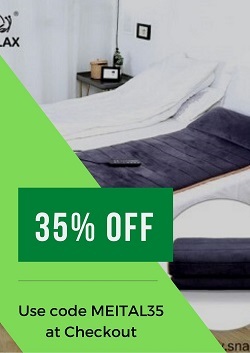
An inversion table can bring dramatic pain relief in as little as 10 minutes (for some people). But long-term benefits are gained through consistent use.
Regular inversion allows your back muscles to relax, your spine to elongate, and creates space for your discs.
This space is vital to the discs’ ability to naturally realign, rehydrate, and return to health, providing flexibility, shock absorption, and improved posture.
See the best inversion tables for back pain and how to use them.
Spinal decompression should be approached cautiously, especially for people with certain medical conditions (e.g., osteoporosis or cardiovascular issues).
Inversion Table Alternative – the Nubax Trio
The Nubax Trio is one of the best alternatives for inversion tables. – Perfect for people who don’t like the idea of hanging upside down.
This smaller device can decompress your back just as powerfully as an inversion table, without hanging upside down, and is portable and much smaller.
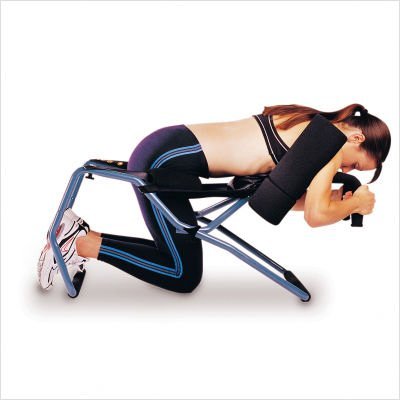
The Nubax Trio is easier to get in and out of, and it allows you to apply as little or as much traction as is needed.
And:
It only takes 3-6 minutes of treatment a day of leaning over and relaxing. (And it’s portable and lightweight – you can take it to your office if you have lower back pain from sitting too much).
If you prefer back decompression without kneeling, the Stamina InLine Traction Control System is your best choice.
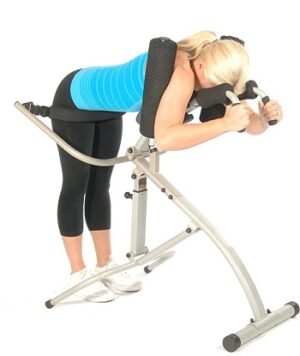
2. Use Infrared Therapy
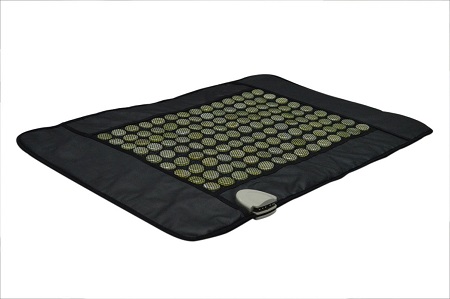
Infrared light therapy is one of the most effective yet little-known natural treatments for, well, just about anything.
Using an infrared heating pad for 30 minutes can relieve your back pain for no less than 6 hours (!) – without medication – while enjoying many other health benefits of infrared therapy.
Unlike ordinary heating pads (I would advise you to stay away from them), which only heat the surface of your skin, infrared heating pads are deep penetrating and completely safe.
There’s no danger of burns, skin drying, or other health risks.
Far infrared rays, which are completely invisible to the naked eye, are capable of penetrating deep into the human body (literally right down to your bones) and improving circulation in the injured area.
This allows for almost immediate pain relief while speeding up the healing of the area.
This way, you are not treating the symptoms; you are taking an active step towards the complete healing of your bulging disc.
At my home, I have the Richway Amethyst Biomat for full body treatment, and the UTK infrared heating pad for smaller areas like the legs and back.
After months of research, I still haven’t found one testimony that infrared heating pads don’t work.
3. Exercises for a Bulging Disc
Certain exercises that focus on strengthening the core, improving flexibility, and stabilizing the spine can reduce symptoms and improve function.
We really like the ones you can see below, and they were very helpful for us:
4. Important Lifestyle Changes
Poor posture can put unnecessary pressure on your lower back, worsening a bulging disc. Focus on maintaining proper spinal alignment throughout your daily activities:
- Use an ergonomic office chair and switch your living room recliner to one that supports your spine and keeps it aligned, especially if you sit for long periods. (Here’s how to DIY an ergonomic work chair)
- Use the best hybrid mattress for back pain prevention
- Switch to a pillow that aligns your spine while you sleep
Staying active is crucial for spinal health because it strengthens the muscles that support the spine and improves blood flow to the discs.
Strengthening your core can provide much-needed stability and support for your lower back. See the best spine decompression exercises you can do at home.
Focus on low-impact activities to avoid putting excessive pressure on your lower back, such as swimming, walking, and Yoga or Pilates.
Lastly, the spinal discs rely on water for cushioning and maintaining their elasticity.
Dehydration can lead to disc degeneration and worsen symptoms of a bulging disc. Drink 8 cups of water daily.
Does a Lumbar Bulging Disc Heal on Its Own?
If you ask almost any doctor, he’ll probably tell you that there’s no easy fix for a bulging disc and that most people feel a significant improvement after about 6 weeks.
However, this prognosis is assessed if you are using conventional treatments, which include pain medication, spinal injections, and maybe physical therapy.
Most conventional treatments usually just mask the symptoms, instead of treating the root cause.
In my experience, natural treatments such as infrared therapy and spinal decompression do a better job of healing the bulging disc, instead of just hiding the pain.
Therefore, natural treatment may bring faster and more effective results and can prevent future problems, such as a herniated disc.
As with any injury, pain, or ache, consult your doctor before beginning any treatment or therapy.
To your health and happiness,
The Back Pain Relief Products Team